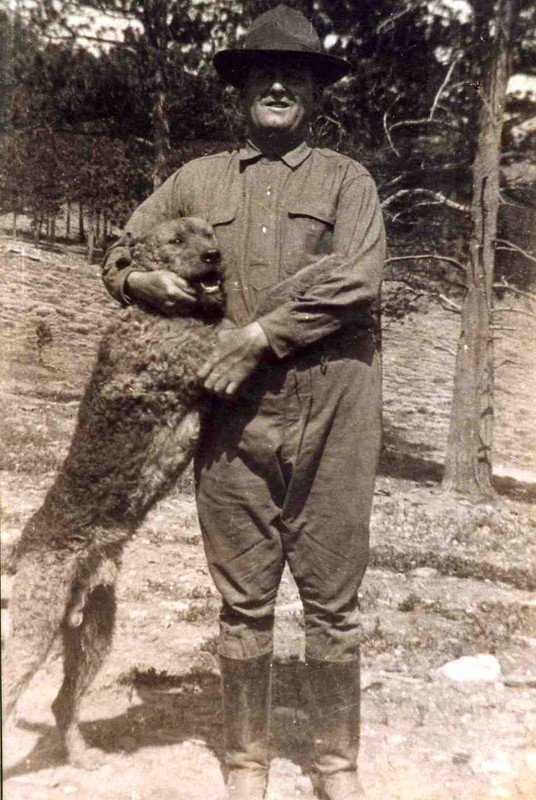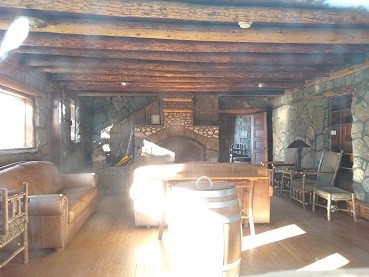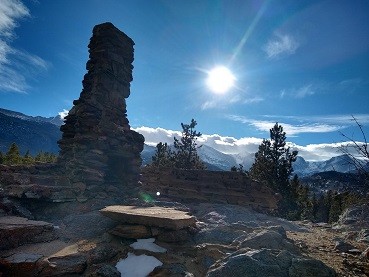YMCA of the Rockies - Mountainside Lodge
Introduction
Text-to-speech Audio
Images

Dr. John Timothy Stone




Ruins of the Burnt Down Mountainside Study


Backstory and Context
Text-to-speech Audio
Mountainside Lodge was constructed between 1919 and1920 at the request of Dr. John Timothy Stone. Stone was an important spiritual leader during the early years of the YMCA of the Rockies, and like many others found peace and spiritual renewal in the mountain setting. In addition to his work at the YMCA's student conferences he was also the leader of the Fourth Presbyterian Church of Chicago, which became one of the most important Presbyterian churches in the United States. Mountainside was not the first building constructed by Stone; that was his study and summer cabin, which was built out of local rock and logs and a little west of lodge in 1915. The study held a commanding view of the Continental Divide.
For the construction of Mountainside Lodge, Dr. Stone hired George Wiard as the contractor.The site chosen was remote and high upon Emerald Mountain. Like the study's original site, it too had expansive views, but more importantly for Stone, the rocky outcrop was a manifestation of his theology of building his life upon The Rock - God. Because of its remote location, Wiard moved his family on to the site. An existing cabin was enlarged for Wiard's family, while Dr.Stone provided a milk cow and a teacher for Wiard's children. The Study became a school during the daytime and a bunkhouse for workers at night.
Wiard hired Norman Fogelstadt as his stonemason. Using native gneiss rock from the slopes of Emerald Mountain, Fogelstadt constructed the foundation and lower level of the building, and inside he constructed a stone arch and large fire place. The logs also came from the nearby hillside. By the time they were harvested, the trees were well cured, standing dead lodge pole pines due to a fire in 1900. Only the windows, doors and flooring had to be purchased. Everything else was milled on site.
Ready for occupancy in 1920, it became spiritual and social hub for the YMCA despite its remote location. Stone invited members of his Chicago church to join him, along with other Presbyterian clergy. In 1924, to help finance a world tour of Presbyterian missions, Dr. Stone reluctantly sold Mountainside Lodge.The new owners converted the lodge into a commercial hotel and added a large dining room, a commercial kitchen and third-floor guest rooms along with more guest cabins. In 1935, Dr. Stone's original cabin, The Study, burned down. It is believed that a spark from the fireplace set fire to the building. The ruins of this study can still be seen nearby the Mountainside Lodge.
Between 1924 and 1956, Mountainside Lodge changed hands several times. From 1935 to 1939, Martha Allesbrook leased the lodge and operated it as the Allesbrook Camp for Girls. After that time the lodge was operated as a commercial hotel for several different owners with no physical changes made to the area.
In 1956, The YMCA of the Rockies had the opportunity to purchase the Mountainside Lodge and its surrounding property. Additional bedrooms were added in the basement and the lodge was soon booked out on a regular basis, but more modern accommodations located closer in to the main camp began to diminish the popularity of the Mountainside Lodge and plans called for its closing. When management looked into rehabilitation, costs seemed out of reach and so in 1994 the Y secured bids for its demolition.
Throughout the latter half of the 1990s, numerous people worked on feasibility assessments for rehabilitating the lodge. Those studies led to the lodge being placed on the National Register of Historic Places. The State Historic Fund paid for an assessment, and in 2004 granted almost a quarter of a million dollars towards its rehabilitation. With pledges from donors, Mountainside Lodge was saved. After a year-long campaign to raise funds, the rehabilitation of Mountainside Lodge began in 2005. Mountainside Lodge remains as a significant example of Rocky Mountain Rustic Architecture and as important surviving tourist accommodation associated with the early development of the Rocky Mountain National Park.
Since its reopening, Mountainside Lodge’s secluded location, expansive views, and rustic feel have made it one of the most popular family reunion and wedding locations at the YMCA of the Rockies.
Cite This Entry
Lloyd-D'Onofrio, Karen. "YMCA of the Rockies - Mountainside Lodge." Clio: Your Guide to History. October 12, 2019. Accessed April 9, 2025. https://theclio.com/tour/979/9
Sources
Melton, Jack R., and Lulabeth Melton. YMCA of the Rockies: Reflections, Traditions & Vision. YMCA of the Rockies, 2006.

